Discover Dysregulated Kids: Science-Backed Parenting Help for Behavior, Anxiety, ADHD and More
Dysregulated Kids: Science-Backed Parenting Help for Behavior, Anxiety, ADHD and More

Dysregulated Kids: Science-Backed Parenting Help for Behavior, Anxiety, ADHD and More
Author: Dr. Roseann Capanna Hodge
Subscribed: 28,712Played: 311,939Subscribe
Share
© Copyright 2025 Dr. Roseann Capanna Hodge
Description
Are you tired of the daily battles, the problems with listening and focus, meltdowns over minor frustrations, and the constant feeling of walking on eggshells in your own home? If you're a parent who feels overwhelmed, stuck in a cycle of reactivity, and utterly exhausted from trying to manage your child's challenging behaviors, you are not alone. You've tried everything—the sticker charts, the timeouts, the endless negotiations—but nothing creates lasting change.
The answer isn't more discipline. The secret is understanding the brain. Welcome to Dysregulated Kids: Science-Backed Parenting Help, the podcast that is revolutionizing the way we parent.
Hosted by Dr. Roseann Capanna-Hodge, a licensed therapist, school psychologist and author with over 30 years of experience in children's mental health and recognized by Forbes as a thought leader in children's mental health, this podcast is your lifeline. Dr. Roseann pulls back the curtain on why your child or teen is struggling, whether they have a clinical diagnosis like ADHD, Anxiety, Autism, OCD, Depression, Dyslexia, Executive Functioning challenges, Lyme, or PANS/PANDAS, or are simply navigating the ups and downs of everyday life.Her revolutionary Regulation First Parenting™ approach teaches that calming the nervous system is the first step before you can connect, teach, or help your child learn.
In short, actionable episodes, Dr. Roseann gives you proven tools like the CALMS Protocol™, quick nervous system reset tools and co-regulation strategies to move your child (and yourself!) from stress and reactivity to calm, connection, and resilience. You'll learn what to say and do to de-escalate meltdowns in the moment, how to build your child's emotional regulation skills, and how to improve their executive functioning and attention so they can succeed at home, at school, and in life.
Imagine shifting your entire perspective from seeing "defiance" to understanding "dysregulation." Picture yourself feeling confident and equipped, knowing exactly how to respond in those tough parenting moments. This is the transformation that awaits you. Parents discover how to break free from the reactivity cycle and build a more connected, joyful family—going from helpless and frustrated to empowered and hopeful.
Here's what you can expect from Dysregulated Kids:
Real Solutions for Real Problems – Whether you're dealing with ADHD, anxiety, sensory overload, meltdowns, or everyday struggles, Dr. Roseann brings strategies that actually work.
Science-Backed Parenting Tools – Learn how to understand your child's nervous system and apply research-driven calming strategies to create a peaceful, happy home.
Practical Advice You Can Use Today – Each episode delivers focused, actionable content without the fluff—just pure wisdom you can apply to your family right away.
Empowerment and Hope – Dr. Roseann blends expert knowledge with deep empathy for the challenges parents face, helping you feel confident that you can make positive change.
This podcast is for parents of the "reactive" kid or the child who feels more, reacts to little things more, and just needs more from you. It's for parents of neurodivergent children or kids struggling with mental health challenges. Really this show is for all parents dealing with typical stressors who want to raise emotionally intelligent, resilient kids in a world that is more demanding and chaotic than ever.
If you've seen Dr. Roseann on TV, you know she doesn't shy away from real talk about real problems. She brings that same authenticity and expertise to every episode, combining hope with science to help you calm the brain and create a happier family.
Are you ready to stop just surviving and start thriving? Subscribe now and start your journey toward a calmer brain and a happier family today.
For more resources, show notes, and to connect with Dr. Roseann, visit drroseann.com.
The answer isn't more discipline. The secret is understanding the brain. Welcome to Dysregulated Kids: Science-Backed Parenting Help, the podcast that is revolutionizing the way we parent.
Hosted by Dr. Roseann Capanna-Hodge, a licensed therapist, school psychologist and author with over 30 years of experience in children's mental health and recognized by Forbes as a thought leader in children's mental health, this podcast is your lifeline. Dr. Roseann pulls back the curtain on why your child or teen is struggling, whether they have a clinical diagnosis like ADHD, Anxiety, Autism, OCD, Depression, Dyslexia, Executive Functioning challenges, Lyme, or PANS/PANDAS, or are simply navigating the ups and downs of everyday life.Her revolutionary Regulation First Parenting™ approach teaches that calming the nervous system is the first step before you can connect, teach, or help your child learn.
In short, actionable episodes, Dr. Roseann gives you proven tools like the CALMS Protocol™, quick nervous system reset tools and co-regulation strategies to move your child (and yourself!) from stress and reactivity to calm, connection, and resilience. You'll learn what to say and do to de-escalate meltdowns in the moment, how to build your child's emotional regulation skills, and how to improve their executive functioning and attention so they can succeed at home, at school, and in life.
Imagine shifting your entire perspective from seeing "defiance" to understanding "dysregulation." Picture yourself feeling confident and equipped, knowing exactly how to respond in those tough parenting moments. This is the transformation that awaits you. Parents discover how to break free from the reactivity cycle and build a more connected, joyful family—going from helpless and frustrated to empowered and hopeful.
Here's what you can expect from Dysregulated Kids:
Real Solutions for Real Problems – Whether you're dealing with ADHD, anxiety, sensory overload, meltdowns, or everyday struggles, Dr. Roseann brings strategies that actually work.
Science-Backed Parenting Tools – Learn how to understand your child's nervous system and apply research-driven calming strategies to create a peaceful, happy home.
Practical Advice You Can Use Today – Each episode delivers focused, actionable content without the fluff—just pure wisdom you can apply to your family right away.
Empowerment and Hope – Dr. Roseann blends expert knowledge with deep empathy for the challenges parents face, helping you feel confident that you can make positive change.
This podcast is for parents of the "reactive" kid or the child who feels more, reacts to little things more, and just needs more from you. It's for parents of neurodivergent children or kids struggling with mental health challenges. Really this show is for all parents dealing with typical stressors who want to raise emotionally intelligent, resilient kids in a world that is more demanding and chaotic than ever.
If you've seen Dr. Roseann on TV, you know she doesn't shy away from real talk about real problems. She brings that same authenticity and expertise to every episode, combining hope with science to help you calm the brain and create a happier family.
Are you ready to stop just surviving and start thriving? Subscribe now and start your journey toward a calmer brain and a happier family today.
For more resources, show notes, and to connect with Dr. Roseann, visit drroseann.com.
353 Episodes
Reverse
Have you ever noticed that the more you explain, the more your child melts down? Parenting a child who reacts this way can leave you exhausted, frustrated, and worried. You try to reason, but instead of calming down, your child gets even more upset. In this episode, I’ll share why talking often backfires when kids are upset, and how your calm presence, body language, and deep breaths can help your child regulate without words. You’ll discover the brain science behind co-regulation and walk away with simple, practical strategies you can use in the moment to help your child feel safe.Why does talking make my child more upset instead of calming them?When kids are dysregulated, their brain shifts into fight, flight, or freeze. Logic and language shut down, and many parents notice that their words actually feel overwhelming instead of calming.More words = more stimulation → which leads to bigger emotions.A calm body speaks louder than lectures.Behavior is communication, not defiance.🗣️ “In the heat of the moment, silence and co-regulation calm the brain faster than explanations.” – Dr. RoseannWhat can I do in the moment when my child is losing control?Instead of talking, use your body language and presence to signal safety. This is what helps many kids settle down.Take a deep breath before you respond. Ask yourself: Am I regulated enough to help my child right now?Soften your body → drop your shoulders, relax your arms, loosen your jaw.Stay at their level → for toddlers, sit on the floor; for older kids, sit nearby. Don’t loom over them.Eye contact is optional → for some children, less is more.Your calm cues reduce cortisol and show your child they are safe.When your child is dysregulated, it’s easy to feel helpless.The Regulation Rescue Kit gives you the scripts and strategies you need to stay grounded and in control.Become a Dysregulation Insider VIP at www.drroseann.com/newsletter and get your free kit today.How do I calm my child without words?Co-regulation works through silent strategies that their nervous system picks up instantly.Use rhythmic cues → slow breathing, gentle rocking, or humming. A predictable rhythm helps kids reset.Offer safe touch if welcomed → a hug, a hand on the shoulder, or letting them crawl into your lap.Stay present, not pressuring → don’t force them to talk or “explain” while upset.Kids can borrow your calm until they find their own.When your child is stuck in dysregulation, more effort isn’t the answer—a reset is. Quick CALM shows you how to calm the brain first with science-backed tools that get real results.Can my calm really teach my child self-regulation?Yes—science backs this up. Mirror neurons mean kids sync with your state, not your words. Over time, they learn to regulate by practicing alongside you.Your calm presence is the model → kids copy what they see and feel.Safety cues build connection → when a child feels safe, their brain learns new ways to manage emotions.Consistency matters → the more you practice, the more your child’s brain wires for regulation.Staying calm is not just about this moment—it’s...
Co-regulation is one of the most powerful tools we have to help children learn how to manage emotions, but many parents wonder: Am I even doing it right? When your own emotions feel overwhelming and your child’s emotions are spilling over, it can be hard to know if what you’re doing is helping.In this episode, I break down the signs you’re co-regulating effectively—and the red flags that mean you’re missing the mark. By the end, you’ll know how to create more emotional safety for your child, model healthy coping strategies, and begin to calm the brain first so that both self regulation and connection grow stronger, even in moments of emotional dysregulation.How do I know if co-regulation is actually working?When you’re practicing co-regulation, look for these green lights:You pause before reacting—even if you’re still triggered inside. That moment of not reacting right away wires calm into your nervous system and models it for your child.Your child returns to baseline faster. Meltdowns don’t magically disappear, but recovery time shortens when your child feels emotional support.You’re less reactive and more present. Instead of personalizing your child’s behavior, you can stay grounded and focus on connection.These are powerful signs you’re co-regulating right, even if the journey is messy. Remember: behavior is communication, not misbehavior.Why does my child stay upset for so long?Parents often worry: Why can’t my child just “get over it”? The truth is, dysregulated kids get stuck in stress responses.When co-regulation is working, you’ll notice:Less escalation over time—strong emotions are still there, but the intensity fades faster.More trust and closeness after difficult moments. Your child feels safe knowing you didn’t “hold it against them.”Children begin to use their own words and tools. Over time, kids copy what you model: deep breathing, naming feelings, and even humor.Emotional regulation isn’t instant. It’s about progress, not perfection.Am I making mistakes with co-regulation?Yes—every parent does. The key is knowing what might get in the way:Performing calm instead of being calm. If you’re smiling on the outside but resentful or tense inside, kids feel it in your body language, tone, and facial expressions.Rushing to fix emotions. Instead of shutting down your child’s big feelings, ride the wave with them. That’s how children learn self-regulation skills and trust that emotions aren’t life-threatening.If irritation or anger doesn’t ease over time, it may be a sign to get extra support for your own stress responses.Yelling less and staying calm isn’t about being perfect—it’s about having the right tools.Join the Dysregulation Insider VIP list and get your FREE Regulation Rescue Kit, designed to help you handle oppositional behaviors without losing it.Download it now at www.drroseann.com/newsletterWhat helps me co-regulate more effectively?Parents can build co-regulation strategies into daily life by checking in with their own emotional states first. Try:Slow, deep breathing before approaching your child.Body scans—ask yourself, Where am I tense? Can I soften this?Eye contact and active listening to show emotional support.Repair after tough moments—apologies and reconnection are powerful tools for healthy...
Parenting a child who doesn’t respond to sticker charts, time-outs, or threats can feel defeating. You’ve tried rewards, consequences, and everything in between—and still the meltdowns, backtalk, and battles keep happening. You’re not alone.In this episode, I explain why rewards and consequences don’t land for dysregulated kids and what you can do instead. You’ll learn the brain science behind why your child can’t connect actions to outcomes in meltdown mode, plus practical strategies to shift from frustration to regulation.Why don’t rewards and consequences work for my child?Many parents wonder why their child’s behavior doesn’t change despite sticker charts, time out, or taking away toys. The truth is:A dysregulated brain can’t learn. When kids are in survival mode, their emotional brain takes over and logic shuts down.Rewards only stick when the brain is calm. Extrinsic rewards like tangible rewards or material rewards can’t replace intrinsic motivation.Consequences may backfire. Punishment often increases frustration, lowers a child’s self-esteem, and damages connection.It’s not bad parenting—it’s a dysregulated brain. Let’s calm the brain first so your child can actually absorb lessons and develop lasting skills.How do I respond when my child’s behavior feels out of control?When your child’s actions push every button you have, it’s tempting to react with harsher discipline. But behavior is communication, and what looks like “bad behavior” is often a stress response.Here’s what helps instead:Pause before reacting. Ask yourself: “Is my child regulated enough for this to land?”Co-regulate first. A calm presence, gentle tone, and predictable routines teach safe and appropriate behavior more than threats ever will.Connection before correction. When your child feels seen and safe, they’re far more likely to return to positive behaviors.This shift helps your child learn that they’re not a “bad kid,” but a person developing the ability to manage emotions and actions.Want to stay calm when your child pushes every button?Become a Dysregulation Insider VIP and get the FREE Regulation Rescue Kit—your step-by-step guide to stop oppositional behaviors without yelling or giving in.Go to www.drroseann.com/newsletter and grab your kit today.What can I do to actually teach my child positive behaviors?Kids don’t learn self-control through punishment—they learn through practice in everyday life when they’re calm.Model regulation. Show how adults handle frustration with empathy and consistency.Teach in calm moments. Coping skills, flexibility, and problem-solving only stick when your child is regulated.Use natural consequences. These are more effective than arbitrary punishments because they’re tied to specific behaviors.For example, if your child forgets homework, the natural consequence is explaining to their teacher—not losing screen time.Encourage effort, not just results. Praise hard work, practice, and small successes to build a child’s self-esteem and intrinsic motivation.Remember, positive reinforcement doesn’t mean bribery—it means helping your child connect actions to outcomes in a way that builds confidence and responsibility.Want real tools that actually work in the heat of a meltdown? Inside
When a child feels overwhelmed, their autonomic nervous system kicks into a stress response. Logic shuts down, emotional regulation goes offline, and no punishment in the world can teach better behavior in that moment. That’s why we have to calm the brain first. When we do, co-regulation creates emotional resilience, nurtures healthy relationships, and supports lasting nervous system regulation—for our kids and for us.In this episode, I share why nervous system co-regulation beats consequences every time and how you can begin using simple, practical strategies to help your child move from survival mode into a calmer, more regulated state.Why don’t consequences work when my child is dysregulated?When kids are in meltdown mode, their autonomic nervous system is in fight-flight-freeze. Logic and reasoning are shut down.Punishment adds shame and fear—which makes behavior worse, not better.A stressed brain can’t learn. The sympathetic nervous system is in survival mode.Regulation must come before correction. Calm brains are the only brains that can take feedback.Behavior is communication. If your child is screaming, throwing things, or shutting down, it’s their nervous system saying, “I feel unsafe.”How can I calm my child’s brain when they’re overwhelmed?Co-regulation begins with your nervous system. You can’t expect a child to self-regulate if you’re dysregulated too.Anchor yourself first: use deep breaths, a soft tone, or grounding mantras.Offer presence over words. Sometimes just eye contact, gentle rhythm, or physical closeness (like deep pressure hugs) communicates safety.Avoid escalating threats. Instead of, “You’re losing your tablet all week,” try, “I see you’re overwhelmed. Let’s breathe together.”Use environmental signals. Soft voice, calm body language, and steady breathing send cues of safety to your child’s nervous system.Co-regulating teaches children over time that they can move from dysregulation to calm with supportive relationships.Want a calmer home in just one week? Try Quick Calm—your 7-day reset designed to help busy parents raise a more regulated child.What does nervous system co-regulation look like in real life?Parents often ask, “But what do I do when the meltdown starts?” Here’s what it looks like in daily life:Less talking, more being. Put down the lecture until your child reaches a regulated state.Mirror calm. Your facial expressions and body language send powerful signals through mirror neurons.Stay nearby. Instead of sending your child away (“Go calm down in your room”), model calm by staying present.Shift from red to yellow to green. Once they move out of the red zone of survival mode, you can use words to guide them back to balance.These small but profound effects build emotional connection and nurturing relationships—the foundation for healthy child development.You don’t have to figure this out alone.Become a Dysregulation Insider VIP and get your FREE Regulation Rescue Kit: How to Stay Calm When Your Child Pushes Your Buttons and Stop Oppositional Behaviors.Head to www.drroseann.com/newsletter and start your calm parenting journey today.How can co-regulation help me as a...
Leaving the house, turning off the tablet, starting homework—why does something so small spark such big meltdowns? If you’re exhausted from what feels like Groundhog’s Day every morning, afternoon, and bedtime, you’re not alone.Here’s the truth: it’s not bad parenting—it’s a dysregulated brain. And once you understand the real reason transitions are so hard for your child, you can begin shifting from constant battles to calmer, smoother days.In this episode, I explain the brain science behind transition struggles, why many children fight tooth and nail against even non-preferred activities, and practical steps you can use to make transitions easier at home, school, or even heading to dance class.Why does my child melt down during transition time?Many parents are shocked by how strongly their kids react when asked to switch from one activity to another. But the root cause isn’t stubbornness—it’s biology.During transition time, the brain has to “shift gears.” For a dysregulated child, this is exhausting and overwhelming.The brain’s CEO (prefrontal cortex) goes offline under stress, making switching tasks harder.Kids with ADHD, anxiety, or sensory sensitivities struggle more because flexibility takes extra energy.Triggers like hunger, fatigue, and sensory overload often go unnoticed but make transitions harder.Behavior is communication. When your child melts down at the moment of change, they’re really saying, “This is too much for me right now.”What are the hidden triggers that make transitions harder?One mom reported that mornings before school felt like a war zone. Her son ended up in tears on the floor while the family scrambled to get him out the door. Sound familiar?Here are the triggers many parents miss:Unpredictable routines – Sudden schedule shifts cause anxiety.Demands that feel rushed or critical – Even a few minutes earlier than expected can trigger stress.Overstimulation from screens – Coming off the computer or tablet without a reset makes kids crash.Emotional load – Stress at home (like divorce or conflict) amplifies reactivity.Think of yourself as a dysregulation detective. Instead of asking, “Why won’t they just listen?” ask, “What’s the root cause of this reaction?”If you’re tired of walking on eggshells or feeling like nothing works…Get the FREE Regulation Rescue Kit and finally learn what to say and do in the heat of the moment.Become an Dysregulation Insider VIP at www.drroseann.com/newsletter and take the first step to a calmer home.How can I make transitions easier for my child?Good news: with a few practical steps, you can shift from chaos to calm. These small adjustments work whether it’s bedtime, leaving the house, or starting a non-preferred activity like homework.Preview and prepare – Give 5-minute warnings with visual timers. Kids need predictability.Co-regulate first – Let’s calm the brain first. Sit together, breathe, squeeze a hand, or offer water. Your calmness teaches their nervous system safety.Build in micro resets – A stretch, a sip of water, or movement helps kids reset between activities.Offer limited choices – “Do you want to walk or skip to the car?” reduces resistance while giving healthy control.Practice when calm – Rehearse routines during low-stress moments. Like a learning curve in gymnastics class, repetition builds new brain...
Some days it feels like your child’s big emotions are just too much—and your own stress boils over too. You’re not failing as a parent. What’s happening is called co-dysregulation—two nervous systems stuck in survival mode together.This episode matters because when kids struggle to regulate emotions, they rely on your calming presence to learn how to do it. When you practice co-regulation parenting, you’re not just stopping meltdowns—you’re teaching your child lifelong emotional skills for resilience and self regulation.In this episode, you’ll learn:What co regulation really means (and what it isn’t)Why kids mirror your nervous system—even without wordsPractical ways to pause, reset, and co regulate in difficult momentsWhy does my child’s meltdown make me lose it too?When your child is in distress, your nervous system naturally reacts. This can feel overwhelming, especially if you weren’t modeled healthy emotional regulation growing up.It’s not bad parenting—it’s a dysregulated brain. Your child’s cues trigger your own stress responses.Mirror neurons mean your child learns to regulate emotions by watching you.Chronic stress, fatigue, and past trauma can intensify your reaction.Staying calm doesn’t come naturally—it’s a skill you practice over time, not perfection.When your child is dysregulated, it’s easy to feel helpless.The Regulation Rescue Kit gives you the scripts and strategies you need to stay grounded and in control.Become a Dysregulation Insider VIP at www.drroseann.com/newsletter and get your free kit today.How can I stay calm when my child has big emotions?Your child learns best when you co-regulate in the moment. Instead of reacting, you anchor their storm with your calm.Pause before reacting. Take a deep breath, unclench your jaw, soften your facial expressions.Name what’s happening. Try phrases like, “I see you’re having a hard time. I’m here for you.”Offer gentle structure. Calm tone, clear expectations, and consistent limits help children feel safe.Practice self care. You can’t be a calming presence if you’re running on empty.Parent Tip: Kids don’t just “catch” calm—they learn it through your regulated presence.Want proven tools to stop meltdowns before they spiral? Quick Calm gives you step-by-step strategies to help your child reset their brain and bring calm back into your home.What are examples of co-regulation strategies I can use today?Co-regulation parenting isn’t about rescuing or fixing—it’s about providing structure and emotional support during tough moments.Slow breathing together. Invite your child to take deep breaths with you.Grounding through touch. A gentle touch or steady eye contact signals safety.Model naming emotions. Say, “I feel frustrated, so I’m taking a deep breath.”Practice in calm times. Just like athletes train before the big game, kids benefit from practicing coping strategies when things are calm.Remember: A supportive environment helps children develop new skills for handling intense emotions.What if my child never seems to calm down?When children stay stuck in dysregulation, it can feel hopeless. But research suggests that consistent co-regulation...
You hold it together all day at work, only to walk in the door and snap at the first person you see. Sound familiar? That’s exactly what your child is experiencing when they come home from school—and you’re not alone in wondering what on earth is happening.After-school restraint collapse is real. Many parents feel overwhelmed when their child holds it together for teachers, only to unravel at home. In this episode, I explain why this happens and share practical steps so you can help your child regulate, reset, and reconnect after a long day.Why does my child melt down after school?What looks like defiance or disrespect is really your child’s nervous system waving the white flag. After a long school day filled with demands, noise, and social stress, many kids come home emotionally depleted.It’s not bad parenting—it’s a dysregulated brain. Your child held it together in class, but once they feel safe at home, the emotional floodgates open. This isn’t rebellion—it’s release.Here’s what’s really happening behind those after-school meltdowns:Kids mask stress at school and let it out at home where it feels safe.Common triggers include: sensory overload, skipped meals, transitions, and sheer fatigue.Behavior is communication. Tears, shutdowns, or outbursts signal that your child’s nervous system needs recovery—not punishment.When parents reframe restraint collapse as a call for regulation, it shifts everything.🗣️ “Instead of feeling frustrated or questioning your parenting, you can focus on helping your child reset. And that’s where real change begins.” – Dr. RoseannHow can I help my child calm down after a long school day?Before homework, before chores, before questions—your child needs decompression time. Think of it as their reset button.Create a calm landing zone. A dim room, quiet time, or cozy corner gives kids space to exhale.Co-regulate first. A soft voice, gentle breath, or even silence helps send the message: You’re safe now.Offer a healthy snack. Protein and complex carbs stabilize blood sugar and energy.Delay tasks. Regulate first, then tackle homework or family responsibilities.When your child is dysregulated, it’s easy to feel helpless.The Regulation Rescue Kit gives you the scripts and strategies you need to stay grounded and in control.Become a Dysregulation Insider VIP at www.drroseann.com/newsletter and get your free kit today.What are the best after-school routines for emotional regulation?Every child is different, but all kids benefit from structure. A predictable routine helps prevent restraint collapse and supports your child’s emotional well-being.Build in movement. A walk, trampoline, or dance session resets the brain and body.Mix in play and connection. Even 10 minutes of relaxed play or conversation signals, I see you.Offer simple choices. Ask, “Do you want music or quiet?” “Snack now or later?” Giving small control reduces frustration.Avoid devices right away. Screen time may feel like a shortcut to calm, but it pulls kids further from emotional regulation.How do I know if my child’s after-school meltdowns need professional help?Some kids bounce back with consistent routines, but for others, restraint collapse is a clue their nervous system needs more...
Parenting a dysregulated child can leave you drained and second-guessing yourself. You try connecting, you set boundaries—yet the meltdowns, backtalk, and big emotions just don’t stop. But here’s the truth: it’s not bad parenting—it’s a dysregulated brain. And there is a way forward.In this episode, I’ll introduce Regulation First Parenting—a practical, science-backed approach that helps children calm their nervous systems so connection and teaching can actually stick. You’ll learn why traditional parenting advice often backfires, how co-regulation works, and what steps you can take today to bring more peace into your home.Why does my child melt down after school even when I try to connect?Many parents wonder, “Why does my child explode the minute they walk through the door?” You’re not imagining it. When kids are running on stress responses, connection without regulation falls flat. Their nervous system is in survival mode, and even the kindest validation can unintentionally make anxiety and distress worse.That’s why regulation has to come first. Until the brain is calm, your child simply can’t access learning, connection, or even your love in the way you want them to.Regulation comes before connection. A dysregulated brain can’t learn or fully receive your love and guidance.Gentle parenting without boundaries fuels dysregulation. Endless empathy without calm structure leaves kids feeling more overwhelmed.Behavior is communication. Every meltdown is your child’s nervous system saying, “I need support, not punishment.”When you shift to this Regulation First Parenting mindset, you stop spinning your wheels and begin giving your child the calm foundation they need to eventually learn self regulation skills, emotional awareness, and positive outcomes.Want to stay calm when your child pushes every button?Become a Dysregulation Insider VIP and get the FREE Regulation Rescue Kit—your step-by-step guide to stop oppositional behaviors without yelling or giving in.Go to www.drroseann.com/newsletter and grab your kit today.How can I help my child regulate their emotions in difficult moments?Your child’s nervous system syncs with yours through co-regulation. When you stay calm, they can borrow your calm.Over time, this builds their ability to self regulate.Tips for practicing co regulation:Model calm stress responses. Use deep breathing, softer facial expressions, or a gentle rhythm in your voice.Pause before reacting. Even a few seconds of self reflection helps you manage your own triggers.Practice mindfulness. A deep breath or butterfly tapping resets your body so you can respond instead of react.Use the traffic light model. Using this model helps parents feel less overwhelmed because it gives you a clear roadmap for when to pause, when to support, and when to guide your child’s behavior.Red = stop talking. When your child is in full meltdown, their brain is in survival mode. This is the time to focus on your own calm, not correction.Yellow = stress is lowering. As their body begins to settle, your co-regulation helps them feel safe enough to start regaining control.Green = learning can happen. Once calm returns, your child’s prefrontal cortex is back online. This is when connection and teaching finally stick.Why do discipline and sticker charts...
Parenting a child in emotional pain is exhausting — you’re not imagining it. You’re not alone. In this episode, I sit down with Erin Kerry, where we dig into a woman’s experience of misdiagnosis, heavy psychiatric medication, and the healing path she found beyond labels.Why this matters: Too often medication is the first line of defense for children and adolescents. Erin’s story shows how medical history, toxins, infections, and trauma can masquerade as psychiatric disorders — and why a comprehensive treatment plan matters for your child’s life and daily functioning.What you’ll learn: signs that behavior may be nervous-system driven, real risks of early psychotropic medication (including selective serotonin reuptake inhibitors), when to seek second opinions, and alternatives that helped Erin recover.Why does my child have sudden mood swings — could it be bipolar or something else?Look beyond labels. Sudden shifts can come from infections, toxin exposure, PTSD, or PANS/PANDAS as well as bipolar disorder. It’s scary when your child seems ‘possessed’ or out of control.Takeaway: Ask about medical triggers (ear infections, mold, immune issues) before assuming a lifelong psychiatric diagnosis.Parent Tip: Request a full medical review from your child’s doctor and consider immune or toxin screening.You don’t have to figure this out alone.Become a Dysregulation Insider VIP and get your FREE Regulation Rescue Kit: How to Stay Calm When Your Child Pushes Your Buttons and Stop Oppositional Behaviors.Head to www.drroseann.com/newsletter and start your calm parenting journey today.How risky is starting antidepressants or other psychiatric medication for kids?When it comes to childhood mental health medication, it’s important for parents to know the meds. While SSRIs and other prescriptions can be helpful, in adolescents they may sometimes increase the risk of depression or self-harm.Erin shared how her own child worsened after starting Zoloft, later being prescribed heavy drugs like Depakote, lithium, and Seroquel. The experience was devastating for her family and highlights why medication isn’t always the right first step.Parents should always weigh the risks, monitor mood closely, and insist on a clear treatment plan with ongoing follow-up.Parent tips for navigating childhood mental health medication:Get informed about side effects, drug interactions, and dosage.Ask for the lowest effective dose.Request frequent reassessments and clear communication from providers.How can I help my child without making medication the first move?When considering childhood mental health medication, it’s essential to start with nervous-system care. Let’s calm the brain first by looking at foundational areas like sleep, gut and immune health, trauma processing, and classroom accommodations before jumping straight to pills. Addressing these whole-child needs often creates meaningful progress without immediately turning to medication.Key takeaway: Behavior is communication. By addressing the medical, nutritional, emotional, and environmental factors, you support true healing instead of just managing symptoms.Parent tip: Try a multi-disciplinary team for the best results. This may include:A pediatrician for medical oversightChild psychiatrists for second opinionsTherapists for emotional support and trauma processingSchool staff to provide classroom accommodationsWhen should I...
Parenting feels harder than ever, and I want you to know—you’re not imagining it.As a mom and as someone who works with so many parents every day, I see how the mental load of modern parenting leaves us feeling exhausted, guilty, and overwhelmed. It’s not bad parenting—it’s our dysregulated brains trying to manage family life in an overstimulating world.In this episode, I’m unpacking why parenting feels so hard right now and what’s really driving the stress so many of us carry. From screen time to isolation to the unrealistic standards placed on mothers and fathers today, I’ll show you how these hidden stressors impact both you and your child.Most importantly, I’ll share simple, calming strategies to reset your nervous system so you can parent with more patience, joy, and confidence.Why does parenting feel so hard right now?I hear this question from so many parents, and the truth is, modern parenting carries a mental load that previous generations didn’t face. You’re not failing—it’s the world we’re raising kids in today.Here’s why parenting feels so heavy:Double-edged sword of screens: Helpful for quiet moments, but dysregulating for both adults and kids.Isolation from community: Unlike a generation ago, many parents don’t have neighbors, friends, or family to lean on.Unrealistic standards: Contradictory advice, social media pressure, and guilt about not doing “enough.”Sandwich generation stress: Working parents juggling their own children, younger siblings, and even aging parents.Parenting today can feel like a full-time job without a break. And when your nervous system is stuck in survival mode, it’s harder to stay patient, present, and consistent.Why do I lose my patience with my child so quickly?When raising children today, it’s no wonder your nervous system slips into survival mode. Even the most loving parent can snap—it doesn’t mean you’re failing. It means your brain is overwhelmed.Here’s what happens inside your brain:Stress hormones flood your system with cortisol and adrenaline.Executive functioning shuts down, so calm responses feel impossible.Your child’s dysregulation mirrors back, and their meltdown triggers yours.The truth? A dysregulated brain can’t parent a dysregulated child. Whether you’re navigating small children, a baby, or even young adults, the reason parenting feels so exhausting often comes back to your nervous system.Giving yourself moments of quality time and noticing when you’re feeling overwhelmed is the first step to calm—for you and your child.🗣️ “The key is pressing pause—step back, breathe, and reset before you respond. That’s how you break the cycle and bring more calm into family life.” – Dr. RoseannWhat can I do when I feel completely overwhelmed as a parent?Parenting is hard, and most parents hit moments where the stress feels immobilizing. You’re not failing—you just need to calm your own nervous system first.Try these small resets when raising kids feels too heavy:Breathe intentionally: Use 4-7-8 breaths to steady your body.Shift your posture: Stand, stretch, or simply step away.Get into nature: Even a quick walk can soothe your stress.Use simple techniques: humming, tapping, or cold water on your neck.Pause before responding: Don’t go in hot.One moment of calm can change the whole direction of family life.Want to stay calm when your child pushes every button?Become an...
When your child’s nervous system is stuck in fight, flight, or freeze, even minor frustrations can trigger explosive outbursts, shutdowns, or runaway behavior. It isn’t disobedience—it’s the autonomic nervous system in survival mode.Let us unpack why kids get trapped in these stress responses and how calming the brain first restores safety, regulation, and connection.Why does my child melt down after minor frustrations?When your child yells, slams doors, or shuts down over something small, it’s not misbehavior—it’s a stress response. Their sympathetic nervous system is in overdrive, pumping out stress hormones like cortisol and adrenaline.Signs your child’s nervous system is stuck in fight, flight, or freeze:Frequent emotional meltdowns and explosive outburstsOverreaction to minor frustrations with big emotionsNeeds 20–30 minutes (or more) to return to calmMood changes, poor focus, and low energy that linger afterwardBehavior is communication. What looks like defiance is really your child’s nervous system waving a red flag for help.What does fight, flight, freeze, or fawn look like in kids?Kids react to stress in different ways, but all of these behaviors come from the same alarm system in the nervous system.Fight: yelling, arguing, aggression, lashing outFlight response: running away, hiding, avoiding tasksFreeze response: zoning out, poor concentration, blank stares, silenceFawn: perfectionism, hypervigilance, people-pleasing (often missed)These are autonomic survival responses—not bad choices.🗣️ “When your child’s body feels threatened, the nervous system takes over.” – Dr. RoseannWhy is my child’s nervous system stuck in survival mode?Today’s kids face a perfect storm of stressors that disrupt the autonomic nervous system and keep the body stuck in fight, flight, or freeze.Common triggers include:Chronic stress at school or homeFamily tension or sibling conflictSensory overload from screens, noise, or crowdsMental health conditions and neurodivergent wiringPoor sleep patterns or lack of optimal nutritionPhysical hurdles like abdominal pain, onset headaches, or body achesWhen stress hormones keep firing, the parasympathetic nervous system (the body’s relaxation response) can’t kick in. Over time, this shows up as:Heightened baseline anxiety and panic responsesConcentration troubles, poor focus, and low energyFrequent illnesses, decreased immunity, and persistent fatigueOther chronic health challenges like disrupted sleep or mood swingsA child’s nervous system stuck in survival mode is more vulnerable to behavioral challenges and chronic health conditions. The missing link is daily regulation that restores safety and calm.When your child is dysregulated, it’s easy to feel helpless.The Regulation Rescue Kit gives you the scripts and strategies you need to stay grounded and in control.Become a Dysregulation Insider VIP at www.drroseann.com/newsletter and get your free kit today.How can I help my...
When your child’s emotions spiral into a meltdown, it can feel like everything in family life stops. The crying, yelling, or tantrum behavior takes over—and no amount of reasoning or sticker charts seems to help. You’re not alone.The truth is, those first 60 seconds of any child meltdown make a huge difference. Whether it’s toddler tantrums at nap time, an upset older child after school, or an autistic child overwhelmed by sensory overload, how you respond sets the tone.In this episode, I share three science-backed steps to help you stay calm, reduce power struggles, and guide your child back to calm behavior.Why does my child’s meltdown get worse when I try to talk them down?When your child is having an emotional meltdown, it’s natural to jump in with explanations, logic, or questions like “Why are you acting this way?” But here’s the important point: over-talking adds fuel to the fire.Say less. Too many words overwhelm an upset child.Use a calm voice. A simple phrase like “I’m here. You’re safe.” can be incredibly helpful.Silence is powerful. Sometimes a quiet spot and nonverbal reassurance calm behavior faster than talking.It makes sense—when your brain is in survival mode, logic can’t land. A child’s tantrums are communication, not misbehavior.What should I do first when my child is melting down?When your child is in the middle of an emotional meltdown, it’s instinct to explain, reason, or ask “Why are you acting this way?” But here’s the important point: over-talking makes tantrum behavior worse.Say less. Too many words overwhelm an upset child’s emotions.Use a calm voice. A short phrase like “I’m here. You’re safe.” helps your child calm faster.Silence works. Sometimes a quiet spot and steady body language soothe toddler tantrums, an older child’s strong emotions, or even an autistic child facing sensory overload.When the brain is in survival mode, logic can’t land. Behavior is communication—not misbehavior.How can I comfort my child without making things worse?You can’t force emotional regulation—but you can model it. Co-regulation is how kids learn coping skills and positive behavior.Offer presence, not pressure. Sit nearby without hovering or demanding.Mind your body language. Get down on your child’s level—kneel with younger kids or sit near an older child.Use gentle gestures. If it feels safe, a light touch on the back or shoulder can help an upset child calm.Think of it as creating a safe space where your child—whether a toddler in a tantrum, an older child with big emotions, or an autistic child in sensory overload—can borrow your calm until they find their own self-control.Yelling less and staying calm isn’t about being perfect—it’s about having the right tools.Join the Dysregulation Insider VIP list and get your FREE Regulation Rescue Kit, designed to help you handle oppositional behaviors without losing it.Download it now at www.drroseann.com/newsletterWhy does this approach work for both younger kids and older kids?These steps aren’t random tips—they’re grounded in child development and neuroscience.Polyvagal theory shows that calm cues shift the brain out of fight-or-flight.Mirror neurons explain why kids copy...
Parenting a child who melts down, shuts down, or pushes you away is exhausting—I know because I hear it from parents every day. You’ve tried sticker charts, consequences, rewards, and still your child’s behavior problems keep coming back. In this episode, I’m sharing why waiting for your child’s struggles to get “bad enough” is a dangerous mistake. You’ll learn how to spot the early warning signs of child behavior problems, why early intervention matters, and the practical steps you can take right now to calm your child’s brain and strengthen your parent-child relationship.Why do professionals tell me to “wait and see” with my child’s behavior problems?I hear this all the time from parents—someone told them their child would “grow out of it.” But waiting often delays the help your child really needs.“Wait and see” is outdated advice. It often comes from well-meaning pediatricians, teachers, or family members.Delays lead to missed diagnoses like autism spectrum disorders, oppositional defiant disorder (ODD), or attention deficit hyperactivity disorder (ADHD).Early intervention is never wasted. Parents regret waiting, not acting.Behavior is communication. When your child struggles, it’s their nervous system asking for support.It’s not bad parenting—it’s a dysregulated brain. Let’s calm the brain first.What happens if I wait until my child’s behavior collapses?When parents wait for rock bottom, the fallout touches every part of a child’s life—and the road back is much harder.Deeper dysregulation: Issues like aggression, anxiety, or school refusal grow more intense and harder to untangle.Increased risk factors: Delays raise the chances of substance abuse, low self-esteem, and long-term mental health struggles.Damaged relationships: Waiting strains the parent-child relationship and can create tension between family members.Shame builds: Children begin to believe “something is wrong with me,” which deepens behavior problems and lowers self-esteem.🗣️ “The earlier we step in, the easier it is to calm the brain, protect your child’s self-esteem, and rebuild family trust.” – Dr. RoseannWant to stay calm when your child pushes every button?Become a Dysregulation Insider VIP and get the FREE Regulation Rescue Kit—your step-by-step guide to stop oppositional behaviors without yelling or giving in.Go to www.drroseann.com/newsletter and grab your kit today.What does early intervention actually look like?Many parents wonder if they should wait until their child is calm before starting therapy or brain-based tools. The answer is no—you can start today.Brain-based supports work right away: Tools like neurofeedback, PEMF, and magnesium help regulate even the most dysregulated kids.Therapy is more effective when kids are regulated: Once the nervous system calms, communication skills, problem solving skills, and coping skills designed for young children actually stick.Collaboration matters: Schools, therapists, and family members can help, but parents are the drivers of change.Progress over perfection: Every small step counts. Calm brains aren’t born—they’re built.Early intervention gives your child the tools to regulate, learn, and thrive—long before behavior problems become harder to untangle.How can parents overcome the fear of labeling...
Parenting a child with sensory challenges can feel like a guessing game. One day a fidget toy works, the next day it’s tossed across the room. That’s because it’s not about the object—it’s about the strategy behind it. Sensory tools aren’t quick fixes, but when chosen with intention, they can transform how your child responds to stress, transitions, and everyday demands.In this episode, I’ll share 5 therapist-recommended sensory tools that actually help kids regulate—not just distract them. You’ll learn how to match tools to your child’s sensory needs, whether they’re bouncing off the walls or shutting down from overload.With the right sensory input, kids can build body awareness, reduce anxiety, and settle into calmer routines at home, in the classroom, and even at bedtime.Why does my child melt down even when I give them fidget toys?You’ve filled the bins with fidget toys and sensory tools, but the meltdowns keep coming. You’re not alone.The truth is, fidgets can distract, but they don’t always provide the sensory input a child’s nervous system really needs.Here’s what to remember:Fidgets don’t work for every child—some kids need deep pressure to calm, others need movement or vestibular input to focus.Look for signs of sensory seekers and avoiders: crashing into couch cushions, covering ears at loud noises, refusing certain textures, or zoning out in busy places.Behavior is communication. A meltdown is your child’s nervous system saying, “I can’t handle this input.”The right sensory tool matters. Matching tools to your child’s unique sensory processing needs is what leads to real regulation.🗣️ “It’s not bad parenting—it’s a dysregulated brain. When we learn how our child responds to sensory experiences, the right tools finally make sense.” – Dr. RoseannWant to stay calm when your child pushes every button?Become an Dysregulation Insider VIP and get the FREE Regulation Rescue Kit—your step-by-step guide to stop oppositional behaviors without yelling or giving in.Go to www.drroseann.com/newsletter and grab your kit today.What sensory tools actually calm my child’s nervous system?Not all sensory toys are created equal. The right tools give the sensory input your child’s nervous system needs—whether that’s calming an over-aroused brain or waking up an under-aroused one.Here are 5 therapist-recommended sensory tools that actually help kids regulate:Weighted items (blankets, vests, stuffed animals): Provide deep pressure that has a calming effect. Best used in short bursts of about 20 minutes to support better sleep and reduce anxiety.Movement tools (swings, trampolines, yoga ball, peanut ball): Give vestibular input and help kids reset their focus. Just a few minutes of movement before homework or classroom transitions can make a big difference.Oral input tools (chewy straws, crunchy snacks): Calm the nervous system through jaw stimulation. Great for picky eaters, children with ADHD, and kids who need extra input to stay focused.Fidgets with tactile features (putty, clickers, stress balls): Provide tactile stimulation that supports self-regulation during seated tasks or transitions.Visual and auditory tools (lava lamps, calming music, noise-canceling headphones): Reduce overstimulation and create a calming effect at home, in classrooms, or during therapy sessions.These...
Parenting today feels overwhelming—and it’s not your imagination. The latest Make America Healthy Again (MAHA) Report reveals shocking truths about kids’ mental health and shows us just how deep this childhood chronic disease crisis runs.Our children are carrying the weight of poor diet, chronic stress, environmental exposures, and endless screen time—and it’s affecting not just their moods but their overall health. As parents, it’s easy to wonder, “Is this just my child?” or “Am I doing something wrong?”Let me reassure you—it’s not bad parenting, it’s a dysregulated brain. In this episode, I’ll walk you through what the report means for American children’s health and, most importantly, share practical steps you can take to calm the brain first, build resilience, and protect your child in today’s overstimulating world.Why are so many American children struggling with mental health?Parents are searching for answers because the numbers in the Make America Healthy Again (MAHA) Report are staggering:Teen depression has doubled in recent years.Suicide is now the second leading cause of death for teens, rising 62% since 2007.Loneliness is at epidemic levels—73% of young adults report feeling isolated.Neurodevelopmental disorders like ADHD and autism continue to rise at alarming rates.These aren’t just statistics from a government assessment. They represent the nation’s health and, more importantly, our kids. The MAHA Commission—led by Human Services Secretary Robert F. Kennedy Jr.—noted that the potential drivers of this crisis include ultra processed foods, poor physical activity, environmental chemicals, and chronic stress.This isn’t just a public health concern—it’s a matter of national security when so many American children of the same age are struggling with preventable mental and physical health conditions. The Human Services Department and National Institutes call this the biggest children’s health crisis in modern U.S. history.Key Takeaways:It’s not bad parenting—it’s a dysregulated brain. Behavior is communication, and we need to calm the brain first.Environmental chemicals, ultraprocessed foods, and chronic stress are fueling this crisis in American children’s health.Over-reliance on medicine and medication isn’t fixing outcomes. The root causes—nutrition, stress, sleep, environmental exposures, and screen time—must be addressed.What hidden drivers of kids’ health problems should parents know about?The MAHA Report shines a light on what’s fueling the rise in dysregulation, ADHD, anxiety, and depression in kids today:Poor diet: 70% of children’s calories now come from ultra-processed foods, leaving their brains starved of the nutrients they need to focus, learn, and regulate emotions.Environmental exposures: Everyday chemicals—like pesticides and microplastics—interfere with hormones and raise risks for autism, ADHD, and other mental health struggles.Chronic stress & sleep loss: Exhausted kids can’t bounce back; lack of rest is draining their resilience.Technology overuse: Children average nine hours of non-school screen time daily, and social media alone doubles the risk for anxiety and depression.Over-medicalization: Prescriptions for ADHD, anxiety, and depression keep rising, yet long-term outcomes aren’t improving.🗣️ “You don’t need to fix everything at once. Start small—like creating tech-free evenings or swapping one processed snack for a whole food option.” – Dr. RoseannIf you’re tired of...
If every mealtime in your house feels like a showdown—tears, gagging, or flat-out refusal to try a bite—you’re probably exhausted and worried. You’ve bent over backwards with rewards, consequences, and endless negotiations, yet nothing seems to work. I want you to know—you’re not alone.In this episode, I’ll share why your picky eater’s behavior is more than just “being fussy,” the biological factors that may be driving your child’s picky eating habits—from sensory sensitivities to gut health—and how you can bring more calm (and more healthy foods) back to the dinner table.Why does my child’s picky eating feel like a constant battle?If every mealtime feels like tug-of-war, you’re not imagining it. What looks like “bad behavior” is often your child’s biology at work. Many kids aren’t refusing food out of stubbornness—they’re reacting to sensory sensitivities or a stressed nervous system.When we understand that picky eating is often about dysregulation instead of defiance, everything starts to shift.Here are a few truths I want you to hold onto:Behavior is communication. Food refusal can be your child’s way of saying, “This feels overwhelming.”Sensory triggers are real. Textures, smells, and even temperatures can set off strong reactions.It’s not bad parenting. Picky eating is a sign of a dysregulated brain—not a reflection of your efforts.Power struggles backfire. The more meals feel like a battle, the harder it is for your child to feel safe around food.Your child isn’t spoiled or dramatic—they’re struggling. And when we calm the nervous system first, we can bring more peace (and variety) back to the table.When your child is dysregulated, it’s easy to feel helpless.The Regulation Rescue Kit gives you the scripts and strategies you need to stay grounded and in control.Become a Dysregulation Insider VIP at www.drroseann.com/newsletter and get your free kit today.What biological factors cause picky eating in kids?If your child’s picky eating feels bigger than just “not liking vegetables,” you’re right—biology often plays a huge role.Research, including twin studies from King’s College London, shows that both genetic factors and environmental factors shape how kids develop food preferences. That means picky eating isn’t about willpower or stubbornness—it’s about what’s happening inside your child’s body and brain.Common biological roots of picky eating include:Gut issues like dysbiosis or inflammation that can shift cravings and digestionNutritional deficiencies (zinc, magnesium, B6) that impact appetite and mood regulationNeurodevelopmental disorders such as ADHD, autism, anxiety, or OCD that make eating more restrictiveEarly feeding experiences (reflux, choking, low muscle tone) that create stress around foodGenetics—studies show identical twins share more picky eating behaviors than fraternal twinsConnections to other eating disorders such as ARFID, which can overlap with restrictive eating patterns and disordered eating behaviorsIn some cases, body image concerns may show up in older kids or teens, further complicating eating habits🗣️ “Picky eating in kids isn’t about being spoiled or difficult—it’s biology shaping eating habits. Once you understand the root cause, you can take steps that actually help.” – Dr. RoseannHow can I help my picky eater try new foods without a...
Parenting a child who pushes back at every turn can feel downright draining. You’ve tried the time-outs, the sticker charts, the consequences—yet the meltdowns keep coming. It’s easy to start second-guessing yourself or wondering if you’re doing something wrong. You’re not alone. It’s not bad parenting—it’s a dysregulated brain.In this episode, I’ll show you why what looks like defiance is actually emotional dysregulation—a nervous system issue, not a character flaw. We’ll walk through the five signs your child is emotionally dysregulated, not defiant, and I’ll give you practical, brain-based steps you can use to calm the storm and move forward with hope.Why does my child overreact to small problems?One of the biggest giveaways of emotional dysregulation is when kids have big feelings over little things. Maybe it’s the broken crayon, the wrong-colored cup, or being asked to do five more minutes of homework.These disproportionate reactions are a sign that your child’s nervous system is in overdrive. It isn’t bad behavior—it’s your child’s body signaling stress overload.For younger children, this often looks like temper tantrums. For older children, it may show up as irritability, anger, or even shutting down. No matter their age, these big emotions tell you that their emotional regulation skills need support.The key question to ask yourself is: Is this their go-to response? If your child is regularly melting down over small problems, it’s not about being oppositional or defiant. It’s a clear sign they’re struggling with:Emotional regulationSelf control and coping skillsA dysregulated brain that needs help returning to calmWhen you reframe these moments as emotional dysregulation rather than “bad behavior,” it shifts how you respond. Instead of getting caught in power struggles, you can focus on calming the brain first—because that’s where real change begins.Why does my child stay upset long after a problem is solved?Some kids just can’t seem to let go. Even after the situation is over, they’re still stuck in those big emotions long after everyone else has moved on.This isn’t about holding a grudge—it’s their nervous system getting caught in a stress loop. No matter how much reassurance you give, they may replay the moment again and again.That’s what emotional dysregulation does: it traps kids in the feeling and blocks them from practicing self regulation on their own.So what helps? Co-regulation. Your child’s behavior is communication, and what they need most is your calm presence. That means:Keeping your tone soft and steadyModeling deep breaths and slowing your body downStaying close so they feel safe, even if they don’t accept comfort right away🗣️ “Your child isn’t choosing to stay upset—they’re stuck in a stress loop. When you calm your own nervous system, you give their brain the roadmap back to regulation.” – Dr. RoseannWhen we, as parents, stay calm first, we give our kids the emotional skills and examples they need to eventually regulate their own emotions.Why does my child reject comfort when upset?It’s heartbreaking when you reach out to comfort your child and they push you away, scream, or even call you names. While it feels like rejection, what’s really happening is that their brain is flooded and their nervous system can’t take in more input.A dysregulated child often can’t receive comfort until their body begins to settle. These emotional responses aren’t about disrespect or bad behavior—they’re stress-driven survival mode. And remember, even adults sometimes need space before they can calmly re-engage.What...
Have you ever wondered why your child melts down after the smallest stressor—no matter what strategies you try? It can leave you drained, second-guessing yourself, and wondering if you’re doing something wrong. You’re not alone. It’s not bad parenting—it’s a dysregulated brain.In this episode, we uncover the hidden link between gut issues and emotional dysregulation in kids. You’ll learn how the gut-brain connection affects mood, behavior, and focus—and discover practical steps to support both your child’s emotional well-being and their gut microbiome at home.Why does my child melt down after eating certain foods?Many parents tell me they notice their child’s behavior shifts right after meals—but what they don’t realize is that the gut microbiome plays a significant role in emotional regulation.Food sensitivities like gluten, dairy, and artificial dyes can spark systemic inflammation, which shows up as mood swings and behavior changes.Constipation and poor gut health allow toxins to recirculate, affecting both emotional well-being and even pain perception.A leaky gut—or increased intestinal permeability—lets harmful substances enter the bloodstream, disrupting the brain and nervous system.So if your child melts down after eating, it may not be “just behavior.” It’s communication from the gut-brain axis—and your child’s body is asking for help.If you’re tired of walking on eggshells or feeling like nothing works…Get the FREE Regulation Rescue Kit and finally learn what to say and do in the heat of the moment.Become a Dysregulation Insider VIP at www.drroseann.com/newsletter and take the first step to a calmer home.How are gut issues connected to emotional dysregulation?Most parents assume the gut is only about digestion, but it actually has a direct line to the central nervous system and your child’s mental health. When the gut is off balance, your child’s ability to regulate emotions, focus, and cope with stress takes a hit too.Did you know that up to 90% of serotonin, the neurotransmitter that helps regulate mood and attention, is made in the digestive tract? That means your child’s gut isn’t just helping them process food—it’s helping them manage emotions and stay calm.When there’s gut dysbiosis (an imbalance of beneficial gut bacteria), kids are more likely to struggle with heightened anxiety, depressive symptoms, and poor emotional regulation.Chronic stress and an unhealthy gut microbiome create a feedback loop that keeps kids stuck in cycles of emotional distress and behavioral challenges.🗣️ “When the gut is inflamed, the developing brain can’t function at its best—leading to struggles with emotional well-being, focus, and even sleep disturbances.” — Dr. RoseannCould my child’s diagnosis be linked to poor gut health?Parents of kids with ADHD, autism spectrum disorder, or mood disorders are often so focused on managing daily symptoms that they overlook something powerful—the gut. Yet research shows that the gut-brain axis plays a crucial role in all of these conditions.When the gut is out of balance, the brain struggles to do its job—and kids feel it in their mood, behavior, focus, and even sleep.Take ADHD, for example:Gut dysbiosis—an imbalance in gut bacteria—can interfere with dopamine and serotonin production.Since these neurotransmitters are key for attention and impulse...
Parenting a child who melts down no matter how hard you try can feel draining and lonely. You’ve done the time-outs, taken away privileges, tried the sticker charts—and yet the child’s behavior keeps coming back.Instead of helping, those strategies sometimes make things worse, leaving you wondering if you’re doing something wrong. You’re not alone, and it’s not bad parenting—it’s a dysregulated brain.In this episode, I’m breaking down why traditional discipline backfires on sensitive or neurodivergent kids, and what actually works instead. I’ll give you practical strategies to calm the nervous system first, show you why connection always beats punishment, and teach you how to build the problem solving skills your child truly needs.Why doesn’t time-out work for my neurodivergent child?If you’ve ever sent your child to time-out only to have the meltdown get worse, you’re not imagining it. For many neurodivergent kids, time outs don’t feel like teaching—they feel like rejection. And instead of calming down, their nervous system ramps up even more.Research shows that parents use time-outs inconsistently, and the reality is, they’re often applied when a child is already at peak emotional dysregulation. In that state, the brain can’t process or learn. Many neurodivergent kids experience shame, anxiety, or even sensory overload instead of gaining self-control.Here’s what’s really happening:Time-outs miss the teachable moment because kids are too dysregulated to reflect.Sensitive children feel wrong or rejected, which can trigger bigger power struggles.Connection is the game changer, because safety is what allows real emotional regulation.So if time-outs keep backfiring in your family, it isn’t about bad parenting. It’s not bad parenting—it’s a dysregulated brain.How can I stay calm when my child is melting down?I know how exhausting it feels when your child is screaming, crying, or refusing to listen. In those moments, your own nervous system wants to react—but here’s the truth: your calm is your child’s calm. This is why I call parents the emotional anchor.When you regulate yourself first, you model the very skill your child is struggling to build. You don’t need to get it right 100% of the time—aiming for 80% is more than enough. Perfection isn’t required for growth, and reminding yourself of that can reduce the pressure and pain you carry as a mom or dad.A few ways to anchor yourself:Pause before reacting. Even 30 seconds of breathing can calm your nervous system.Check your body language. Slow down, soften your tone, and relax your shoulders.Co-regulate first. Teaching happens later—after your child feels safe and understood.🗣️ “When you calm yourself first, you give your child the right tools to eventually calm themselves too. That’s so much sense in action.” — Dr. RoseannYou don’t have to figure this out alone.Become a Dysregulation Insider VIP and get your FREE Regulation Rescue Kit: How to Stay Calm When Your Child Pushes Your Buttons and Stop Oppositional Behaviors.Head to www.drroseann.com/newsletter and start your calm parenting journey today.What do I do when discipline feels like punishment, not teaching?Traditional discipline often focuses on stopping a child’s behavior instead of teaching new skills. But many neurodivergent kids don’t connect actions with natural consequences in the same way neurotypical kids might. That doesn’t mean they can’t learn—it just means we need to focus on the core...
If your child turns into a different person after screen time, you’re not imagining it.You’re not alone if your once-sweet kid becomes reactive, moody, or shut down after using digital devices. Many parents are overwhelmed by meltdowns, mood swings, and total refusal to transition after screen use—and they’re left wondering what went wrong.Let me down what too much screen time really does to the developing brain and how it fuels dysregulation, anxiety, and poor emotional control. Most importantly, I’ll share simple, consistent strategies you can use to set limits before things spiral out of control.Why does screen time affect my child’s emotions so much?We often think of screens as harmless entertainment, but they trigger a storm inside the brain. Fast-paced videos and online games light up the dopamine system, conditioning kids to crave more and more stimulation. At the same time, the part of the brain that helps with self-regulation—the prefrontal cortex—gets underused.Add in blue light exposure that disrupts melatonin and sleep cycles, and you have a perfect storm for emotional dysregulation. Even young kids are being impacted. In fact, 40% of American 2.5-year-olds have their own device.This constant stimulation overwhelms the nervous system and wires the brain for volatility. And when there’s no recovery time, kids start to struggle with mood, transitions, and basic regulation.Discover how to shift your child from chaos to calm with our proven Quick Calm Toolkit.What are signs of screen time dysregulation?If your child seems irritable or totally zoned out after screen use, that’s not normal—it’s their brain signaling overload. Many parents describe their kids as “not themselves” after using digital devices.Common red flags include:Meltdowns or aggression that show up after screen time endsMoodiness or emotional shutdown even after brief device useAvoidance of non-screen tasks like homework or choresRefusal to engage socially or try new activitiesAnxiety, anger, or compulsive behaviors tied to screen habitsIn fact, one mom told me her 10-year-old “checks out” for hours after gaming. He won’t eat, talk, or play—and it’s happening more often.How can I set screen limits without daily power struggles?The key is to set boundaries before the device turns on—not in the middle of a meltdown.Have calm, clear conversations ahead of time about screen time rules. Involve your child when possible by asking, “How much time feels fair to you?” This helps them feel heard—even if their answer is unrealistic.Once a boundary is set, stick to it without emotion or debate. That consistency is what rewires the brain for self-control.Use language that connects to brain health: “You’re not in trouble. Your brain is just telling us it needs a break.” Or: “Your brain needs to recharge so it can feel strong and happy.”You can also plan buffer time after screens—like five minutes of movement, a snack, or calming connection. This supports the nervous system and makes transitions smoother.If you’re tired of walking on eggshells or feeling like nothing works…Get the FREE Regulation Rescue Kit and finally learn what to say and do in the heat of the moment.Become a Dysregulation Insider VIP at




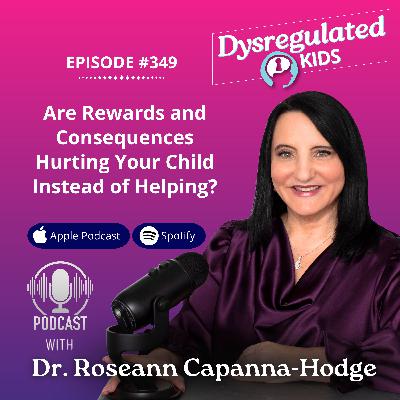

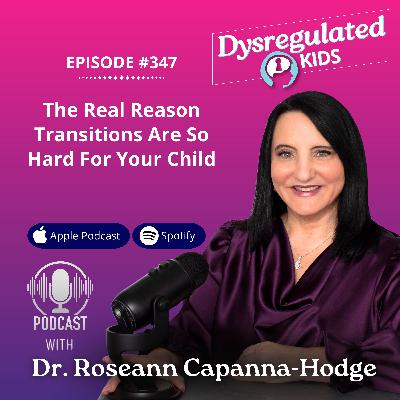

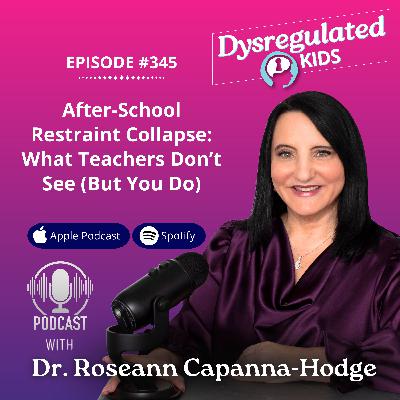
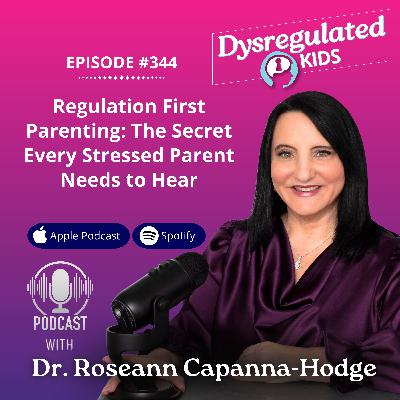
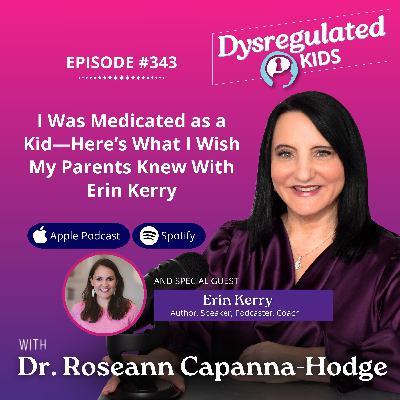
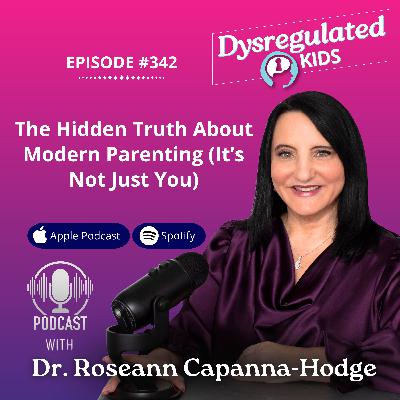
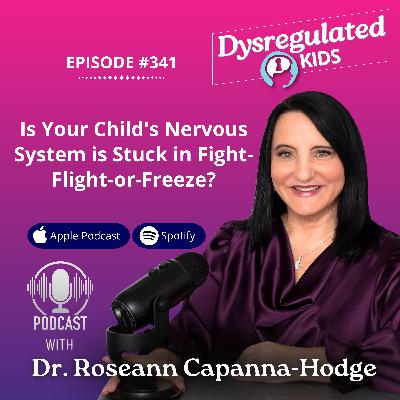
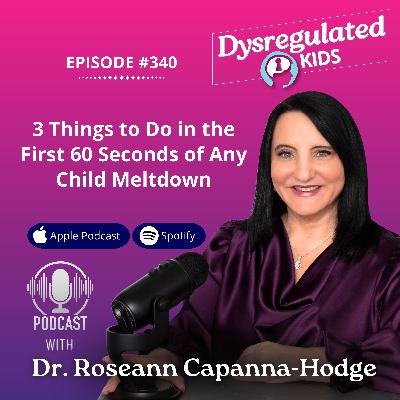
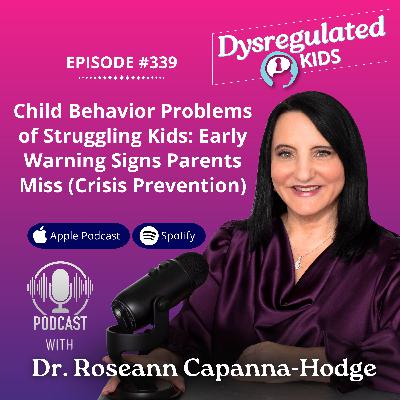

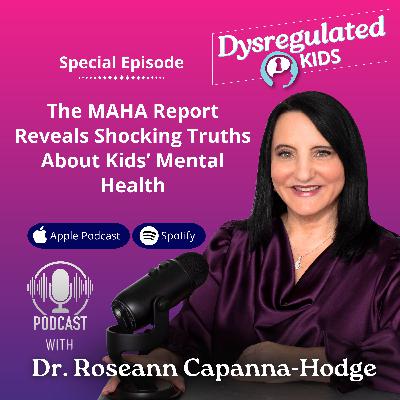
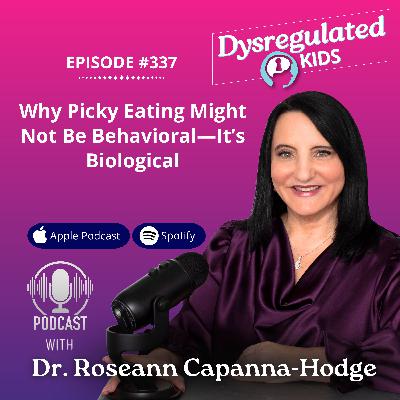


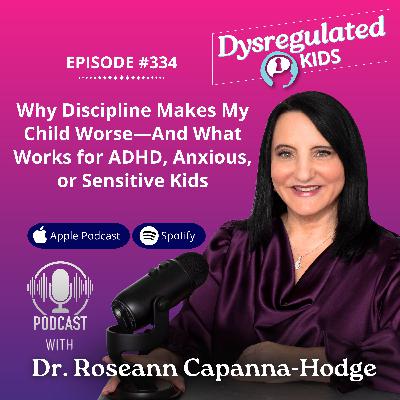
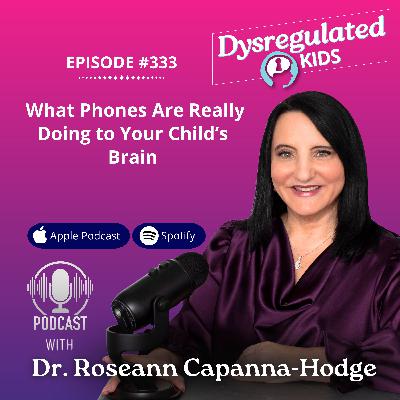



On weekends, you can not only relax. The cryptocurrency market works 24 hours / 7 days, so you can get an additional profit. We will do this using the Ethereum scaling strategy on standard technical indicators. mfi indicator crypto